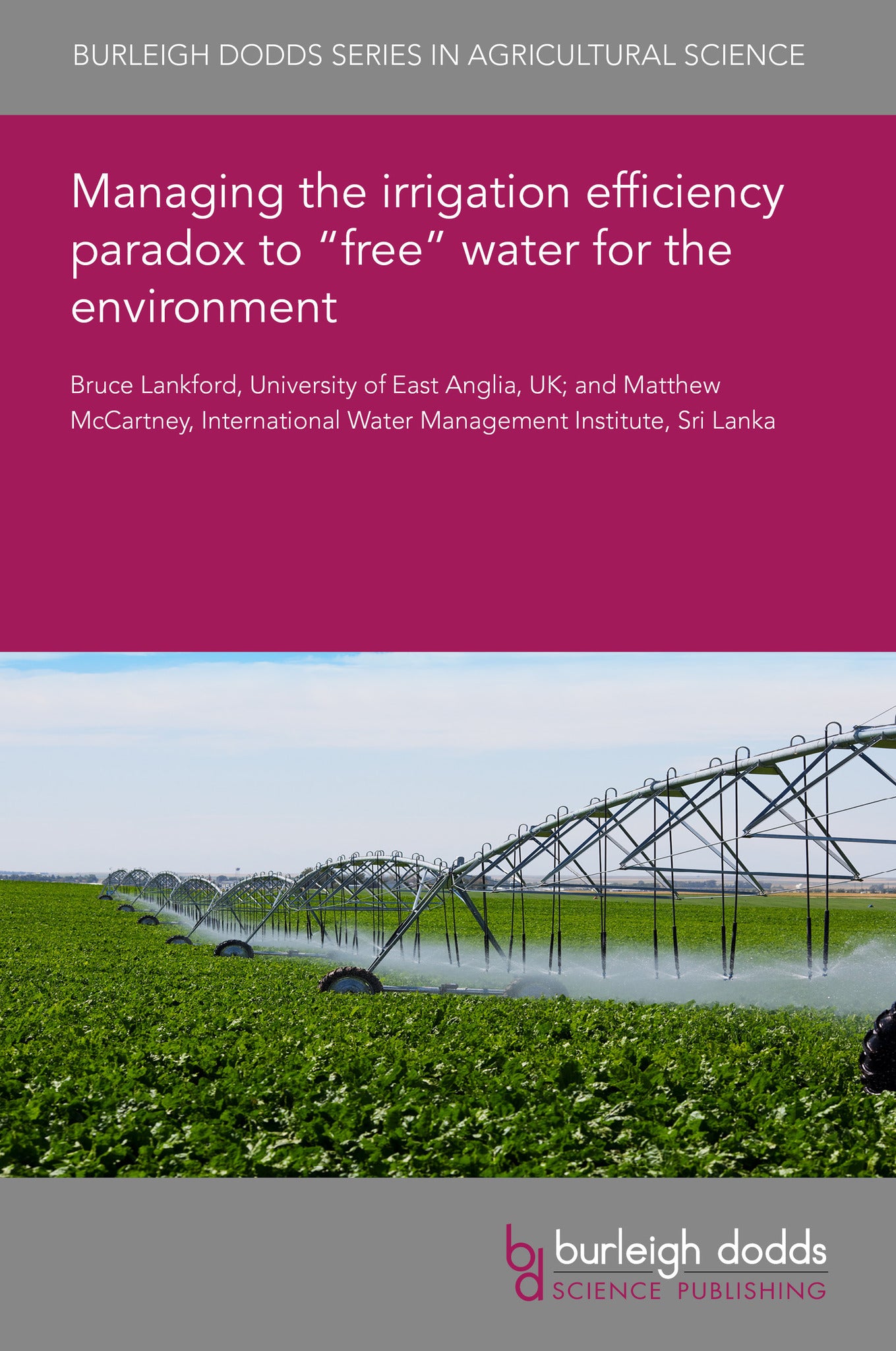We're sorry. An error has occurred
Please cancel or retry.
Managing the irrigation efficiency paradox to “free” water for the environment

Some error occured while loading the Quick View. Please close the Quick View and try reloading the page.
Couldn't load pickup availability
- Format:
-
10 June 2024

Reducing water consumption (equivalent to depletion) in irrigated agriculture ‘saves’ water, freeing it up to be allocated to other sectors, for example, to restore environmental flows. However, this task is not straightforward because consumption is difficult to adjust; there are many scales, motives, actors, concepts, calculations and hydrological practices and processes involved. Without a comprehensive approach to managing water, attempts to save water typically result in no observed effect, a reduction in crop production, a redistribution of water, or, paradoxically, an increase in water consumption. To address this challenge, a six-part ‘irrigation savings allocation framework’ (ISAF) to effect consumption-based savings is proposed. It first considers crop water requirements, then field applications, through to intra-system, and then system withdrawals of water. ISAF controls for irrigation consumption rebound and reuse in order to reduce depletion at the basin scale, and it tracks ‘freed up’ water to ensure it can be allocated to nature or other sectors.

TECHNOLOGY & ENGINEERING / Agriculture / Irrigation, Irrigation and water management, TECHNOLOGY & ENGINEERING / Agriculture / Agronomy / Crop Science, TECHNOLOGY & ENGINEERING / Agriculture / Sustainable Agriculture, TECHNOLOGY & ENGINEERING / Agriculture / Agronomy / Soil Science, Sustainable agriculture, Agricultural science, Agronomy and crop production

- 1 Introduction
- 2 The irrigation savings allocation framework
- 3 Sustaining/boosting crop production and water productivity (Part 1)
- 4 Managing and apportioning water at different scales (Part 2)
- 5 Translating withdrawals into consumption-based savings for nature (Part 3)
- 6 Cross-cutting governance architecture (Part 4)
- 7 Accounting for basin-level outcomes (Part 5)
- 8 Direction of cascading savings between scale-levels (Part 6)
- 9 Conclusion
- 10 Where to look for further information
- 11 References



